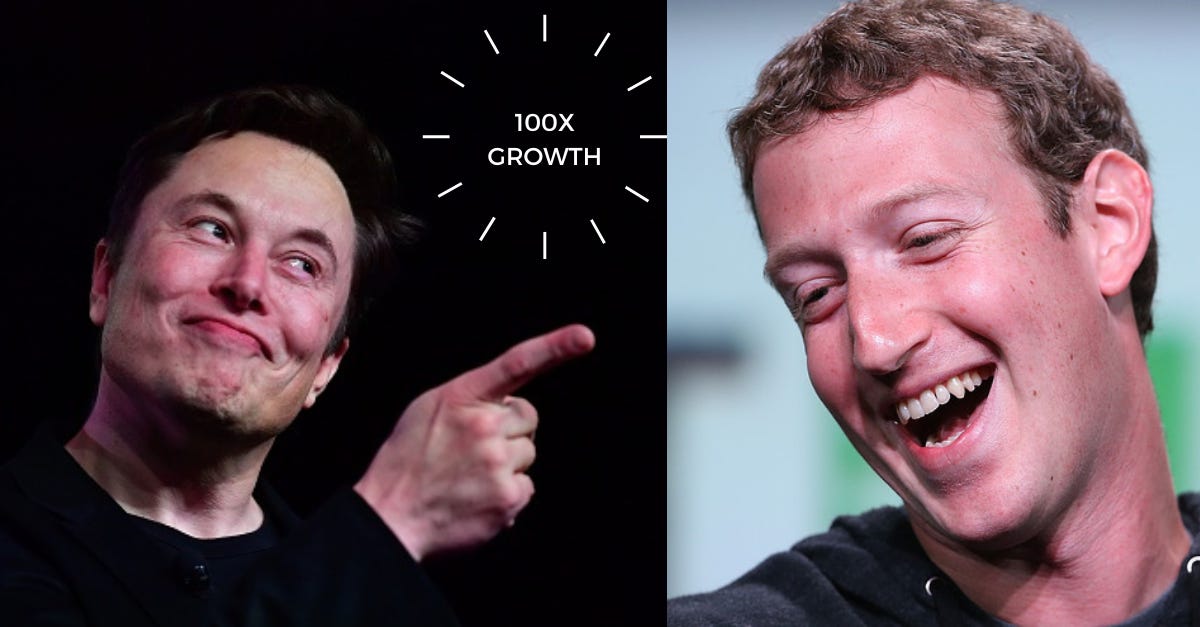There are only three ways to Grow your startup - Yes Just Three - Wanna know - Read on!
All of us want to grow our businesses. Essentially any startup/business has two components at the most fundamental level:
Product: Create a product which would solve a “painful” problem for a “certain” segment of users.
Distribution: Make sure that the product is put in front of the “target segment” in a “clear and concise” manner.
If a startup is able to identify a strong problem for a certain user segment and creates a genuine solution which is 10x better than the current solution being used and is then able to make the target segment aware of the solution then it creates MAGIC called the Product Market Fit (PMF)!
In this post, we would talk about the Point 2 listed above which is “How you can grow your distribution and what are the systematic ways of doing the same” once you have the PMF.
Most of us are pretty good in creating products (well - thats our core competence - isn’t it :)) but we feel that once we build the product - people would come (that too in crowds). But that alas is almost never the case unless you already have a huge community of followers who already engage with you in a continuous manner .
I have looked at my Google Analytics real time dashboards for weeks with just one blip (that was me)!
So without further ado - lets address this monster in the room. So, you have launched a new product and are staring on Zero Real Time Traffic like this - So what do you do.
Summary: There are essentially just three ways to structurally look at this problem and drive some good traffic to your website.
— Buying Ads
— SEO
— Product Virality
Now let’s look at them one by one. Specifically we would talk about
Basics of the channel
Who should use this channel
What are the Pros and Cons of using the channel
1. Buying Ads
This is the easiest way of driving traffic to your website/app. You just need to pay a website owner to buy ad inventory. Looks intimidating? How would you find the websites - contact their owners - negotiate the rates - enter into an agreement and then run the ads.
Darling - It’s really simple actually. There are two behemoths that control 80%+ Ad inventory on the internet. And those giants are called Facebook and Google. They obviously have their own ad inventory but they have also aggregated ad inventory of the internet through their “Google Adsense” and “Facebook Audience Network” programs. And essentially, both of them operate a self serve platform. You just need to sign up for the platform - choose an audience - create an ad copy/creative and punch in your Credit Card and voila - you see your Google Analytics Javascript code being fired and the Real Time Google Analytics blips coming and going. This would feel like Orgasm - when it happens for the first time :)
So, the idea is fairly simple.
However, who should use this channel? The answer to this question, inexplicably is more art than science or may be more science than art - Fuckk I don’t know whether it is more art or science. But here it is -
In a pure Baniya language - You are paying Rs. X for every visitor who is coming to your platform - the whole thing makes sense only if you make a profit of Rs. X + Delta from that visitor (this is hard Baniyagiri and comes to fore only during Funding winters). Otherwise, we pay Rs. X per visitor to the ad platform in the hope that the user would stick to the platform and we would make a profit of Rs. X + Delta over the lifetime of the visitor (And nobody generally knows the lifetime value of their customers so these promotions keep going until - you guess it right - the funding winters).
Summary: The holy grail of Paid Marketing channel is to figure out your unit economics such that you make more in profits than what you pay in Customer Acquisition Cost (CAC). Better if you can make that much profit in the Paid session only. If that is not true, then you need to have a very clear understanding of customer LTV and LTV must be 2-3X of CAC.
Pros of Paid Marketing Channel:
You can start getting traffic the same day you decide to explore this channel
It is highly customisable and self serve so you do not need anyone’s help except for setting up the landing pages
You can test out a lot of your hypothesis through multiple ads and tracking results on these different ads so this can be really useful pre PMF as well
Cons of Paid Marketing Channel:
A lot of other advertisers are also bidding for the same ad inventory so it is not easy to make the economics work (bacause there are a lot of fools burning VC money)
It requires a hell lot of iterations for the channel to start making economic sense
People end up burning a lot of money on this channel
The biggest issue is that the traffic dries up as soon as you stop the ad campaigns
Summary: Paid Ads are a great way to drive traffic to your website. There are mainly two use cases: One is Pre Product Market Fit (PMF) to test the product/marketing copy etc through actual users and iterate on your proposition basis that. Second is to scale up your product post PMF when you have the value prop and unit economics figured out. However, people generally scale up before PMF which is DANGEROUS!!
If you have nailed your unit economics and are making money for every new user who is coming through Paid Ads then by all means scale the whole FUCKING thing up else SHUT UP and keep iterating on small budgets.
There are consumer companies which have scaled heavily basis Paid Ads - these companies have very strong CTRs on Ads and strong conversion rates on Website/App (due to their highly differentiated/ridiculously low priced product) and/or strong customer retention. For example - Grammarly, Canva and Wish have all killed it through Paid Ads. The LTVs for those companies are very, very high. They're kind of average LTVs for B2B companies. Most consumer subscription companies that are $5 to $7 a month. Their LTVs typically cap out at 50 to 60 bucks. However, both Canva and Grammarly have few hundred dollars as their LTV. Now imagine competing with them for ad slots on FB/Google.
2. SEO Strategy
The next archetype for building strong traffic is leaning into SEO heavily. There are two ways of looking at the SEO strategy - two lens essentially - One is creating high value content where there are gaps in the current search results and the second is a long tail programmatic angle.
All media houses essentially follow Strategy#1 as they have big teams churning high quality content day in and day out.
SEO, in general, takes some time before your GA code starts firing through SEO visitors. For Strategy#1 - its one content piece at a time
SEO Strategy#1 - Need to figure out Keywords very very smartly - Initially, you wont have any domain authority so you need to start with keywords where we have a clear gap in the search results with none of the big domains ranking and you would be able to 10X the results quality for Google
One way of practically doing this is to look at keywords where programmatic pages of User Generated Content (UGC) from sites such as Pinterest and Quora are ranking at the top. You just need to take a bet on whether your content would be 10X the Pinterest/Quora content or not.
SEO Strategy#2 - Programmatic Angle - The funda is fairly simple - there are thousands/millions/billions of long tail keywords which you can target through programmatically created pages. Think “Doctors in Delhi/Mumbai etc” keywords for Practo. There would be thousands of such pages created by the platform but these pages are not being written by anyone. These are being created through the backend database of Doctors that Practo has.
Take Canva for instance, their biggest initial growth loop was their long tail SEO strategy where they dominated two categories of long tail keywords, “make keywords” and “template keywords”. So if you're searching for a template of any kind, say searching for “template for a wedding invitation”, Canva would show up. They had incredibly strong SEO and they were just capitalising on all the long tail traffic. Not every product is going to lend itself to this programmatic SEO angle but if it can be exploited then it is like magic.
We capitalised the same in our first startup - Baggout - and were driving north of one million monthly sessions through this same strategy. Pls comment below if you want me to write a detailed post on Baggout strategy.
Now, the problem with SEO is that it, generally, takes 3-6 months time after which you start seeing some kind of results. So, need to setup experiments very very clearly so that we iterate fast and are able to focus on the right SEO strategy.
"How can you lower the cost of experimentation SEO as much as possible?" I think as a rule of thumb, if you can time box the experiments to three months then its good.
Pros of SEO
The traffic comes in sustained manner. Even if you stop doing SEO - the traffic would keep flowing
Its free traffic (except for the SEO team cost)
Cons of SEO
The time horizon needs to be at least 3-6 months
It is difficult to calculate the ROI of investments unlike Paid Acquisitions since the direct correlation between your SEO activities and results is very difficult to establish. Now this definitely is more art than science.
3. Product Virality
What is Product Virality and how do you leverage that?
The third and final channel for building distribution is Product Virality/Network Effects. Essentially, a product has network effects if the value of the product increases for a user as more people start using the product.
If there are inherent network effects then we can start thinking in terms of viral loops and referral loops to quickly grow the product. But mind you - these network effects are either available in the product from the starting or they are not there. It’s very difficult to manufacture them.
Think Facebook.
The product itself was viral and users were hopping on through crazy amount of Word of Mouth and referrals as everyone wanted to befriend the hot people on their campus.
Think Marketplaces like Amazon
As, more sellers join in - the platform has more value for the customers as they get wider selection. Similarly, as more customers join - sellers get an opportunity to be discovered by more customers and grow their business.
Think Hotmail
As more users started using Hotmail, it had more value for the existing set of users using the service as they could reach out to more and more people through Hotmail.
Awesome. So if you have network effects, AKA if the product becomes more useful with more people or there's amazing word of mouth already, or there's collaboration between users, probably a good sign that you could lean into virality or maybe referrals.
However, the story does not end here. The question is how do you bootstrap this network and how do you grow it to the minimum viable number so that the network effects start moving the flywheel.
I was hearing a podcast the other day which featured Discord’s founder - Jason. Now Discord is a product with very strong network effects (essentially it started as a communication channel amongst gamers and is now a communication channel for many many more use cases). So the podcast guy asked him - how did you grow your product - How much word of Mouth helped Discord grow in the initial days. and Jason replied - If you have 10 users on your product - Word of Mouth does not play much role. You need to bootstrap the product to a reasonable number and only then these flywheels start acting. In his case, he was deeply entrenched in the gaming community because he was a gamer himself so he leaned into a number of his friends who had sizable gaming communities within Reddit and it was through this channel that Discord was actually bootstrapped.
So, essentially even if the product is highly viral - you need to bootstrap the product usage to a minimum level and then you need to consciously create a number of viral/referral loops so that the existing users bring more users in.
Think of the Dropbox example - Drew Houston used a beautiful viral loop which is sorta part of startup folklore - They gave away 30 GB free space to the existing user for every new referral and guess what people bought in a LOT OF their friends.
Pros of Viral Marketing
It is mostly free or very cheap
It acquires new users along with retention of existing users at the same time
It creates a flywheel and feeds on itself making it arguably the fastest growth channel.
Cons of Viral marketing
It is either there in the product or not. Almost impossible to manufacture
Its not as automated as people generally think - Right viral and referral loops need to be identified after bootstrapping the product to a sufficiently large number of users
Which strategy to focus upon?
So these are the three ways to grow your startup. How should we go about it - Should we do it all. Get someone on SEO, someone on paid and a third team on virality."
Or is it smart to focus on one and then expand down the road or try them all and see which one works best?
I would say focus paired with rapid iterations is the way to go. With limited resources, you need to ruthlessly prioritise as there are only a finite number of tries that you have at finding what works, right? So the middle path of Buddha works best here. Don’t be extremely focus only on one area - neither spread yourself thin by trying all out at once. The approach of iterations is the best here.
So, which approach are you going to try. What are your next steps steps to start growing your startup. Lemme know in the comments.
I have created a template which can help you plan these rapid experiments. Just subscribe in the below box and I would send you the template in your mail box.







Great article.
Share details of Baggout too.
Excellent article. Idea of Template is good ,as interested can take immediate action . . You may like to take example of Tata cliq and speculate which strategy will be appropriate